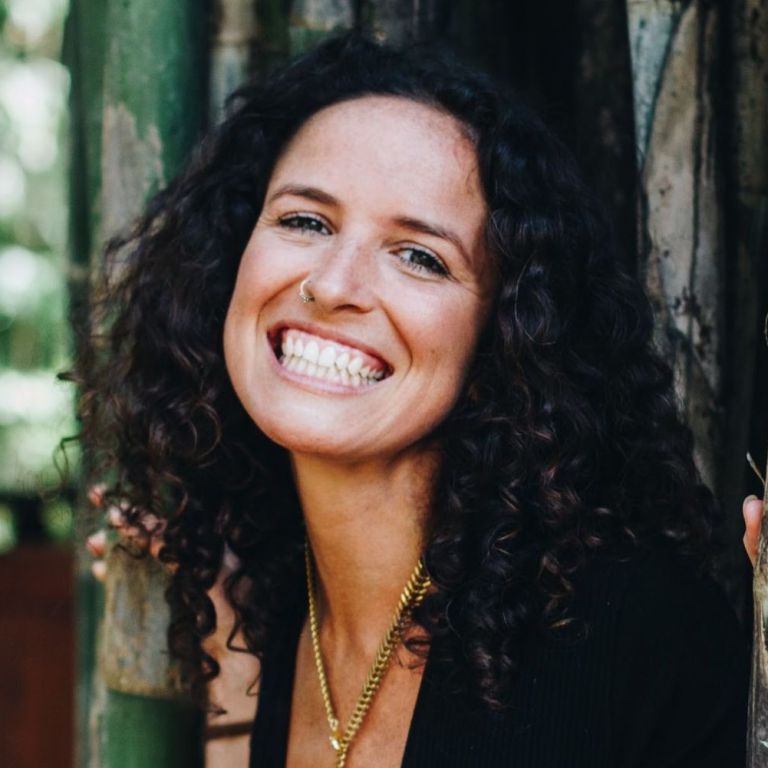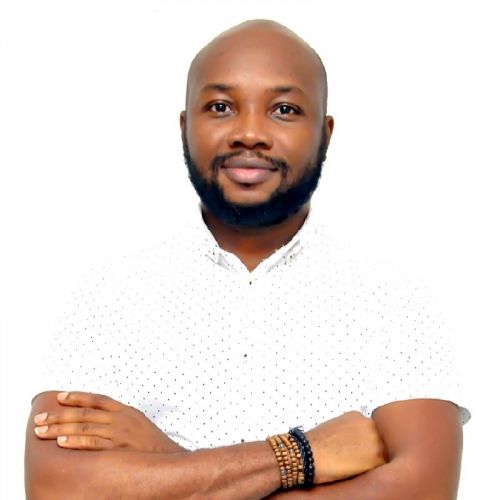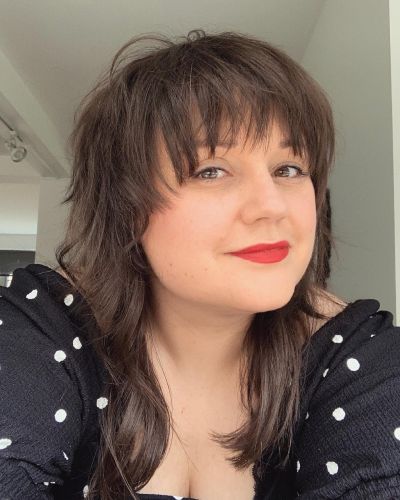How ‘co-creation fashion’ is helping to change the narrative surrounding refugees
UNHCR estimates that global forced displacement has surpassed 84 million at mid-2021, which includes internally displaced, refugees and asylum-seekers. In addition to persecution and conflict, natural disasters are also forcing people to seek refuge in other countries.
We’re speaking with experts and business leaders to understand how businesses can do their part in supporting displaced people, and integrate them into the economy.
Meaningful Business (MB:) Can you introduce your work, and how you support displaced people?
Cara Boccieri (CB): My work is what I call ‘Co-creation Fashion’ – connecting artisans living in refugee situations with creative people around the world. Together we co-create ethical fashion collections using the traditional skills the artisans have.
We are changing the global narrative surrounding refugees – from one of fear, lack and pity, to one of human connection, worthiness and abundance. We believe in creating spaces (and jobs) regarding both creative and economic inclusion.
I have a few ‘Co-creation Fashion’ projects around the world and am currently working on Koldbath Craft Kollektiv in Sweden with newly arrived women coming from Ukraine.

Cara Boccieri, Founder of Akamae
MB: What are the biggest hurdles that exist for displaced people who are trying to find employment?
(CB): These can differ greatly depending on the location and the region’s subsequent policies. For example, in Thailand it is not legal for displaced people to be employed. In Sweden the challenges are different – language, lack of a network and non-recognition of qualifications make it difficult to find employment.
However, at the end of the day there is one major hurdle which most displaced persons, no matter where they are in the world, will face: the lens with which they will be seen. They will be viewed as a “burden to be shared”, a “dependent” person requiring “help” and “integration.”
It is only by changing this lens and seeing everyone as truly valuable that we can begin to understand that these people are a worthy addition to our workforce; people whose insights and experiences we truly need.

Workers creating designs
MB: What are some of the myths and negative stereotypes that exist around hiring refugees, and what can we do to dispel them?
(CB): I believe the myths and stereotypes that exist all stem from the above mentioned ‘lens.’ The general discourse is that we are doing someone a favour by hiring them, because it is believed that they are a burden. It comes from a place of pity instead of one of worthiness.
To dispel these myths, we can look to positive examples of how diversity serves companies as well as examples of successful entrepreneurs. Having a different perspective, whether cultural, linguistic or experiential is undeniably valuable in our global society.
We need to acknowledge this and change the narrative. A simple example is one of a pharmacist arriving from Ukraine. Our current narrative and subsequent policies require that this person go back to school and obtain new degrees in the new country, as well as speak the new language. I would argue that this person is already extremely valuable in that they are not the only Ukrainian arriving to this new country. There are hundreds of thousands of other Ukrainians arriving who speak the language and are accustomed to how pharmacies work in Ukraine. I would argue that having the Ukrainian pharmacist on staff (and simultaneously learning a new language and policies) in order to serve the Ukrainian customers is valuable.
Another example is my own work. I don’t think that you should buy from my fashion brands out of a sense of pity. We are offering items handmade with lifelong skills which have been used for millennia. These products are of high quality and design. We are filling a need for customers (both B2B and B2C) who desire these products made with ethics and sustainability in mind.
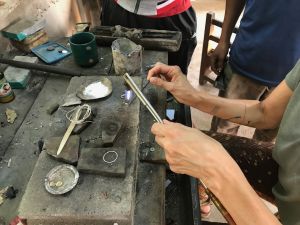
Workers working on metal parts of garments
MB: What is the best way for companies to access and hire from refugee communities?
(CB): Communication and connection is never to be underestimated. You have to get out of your typical network. Get in touch with your local job placement centres, organisations and migration institutions. Find out how they are going about receiving new arrivals and placing them in jobs. Often the case is that certain questions (which might relate to your work) are not being asked during refugee intake or job placement interviews.
For example, I work with women with amazing handcraft skills. I found out that at job placement interviews the women were asked about previous work experience, however not about their ‘domestic’ skills (e.g. sewing, knitting, cooking, etc.). A small shift in the questionnaire can make a huge difference to how we understand and value someone’s experiences and skills.
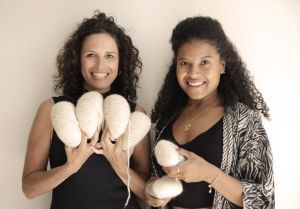
Team photo at Akamae
MB: What is your advice to employers who want to hire displaced people, and what kind of systems should they put in place for an effective integration?
(CB): I would love to see this happen from a ‘co-creation’ perspective. I don’t want to see the board sitting in a room and deciding what ‘integration’ looks like for any new hire. I would like to see a new employee participate in the conversation. What does ‘integration’ mean and look like to them? How would they like to measure their goals? What impact would they like to have on the company? What experiences (beyond the skills that they were hired for) do they have which might contribute to an innovative workspace (e.g. languages)? Again, connection, communication and co-creation is never to be undervalued.




